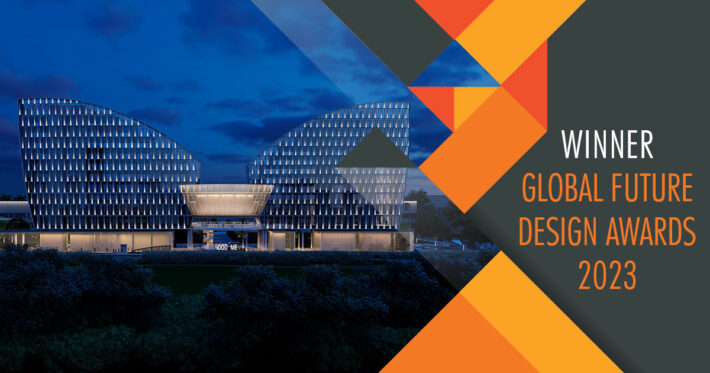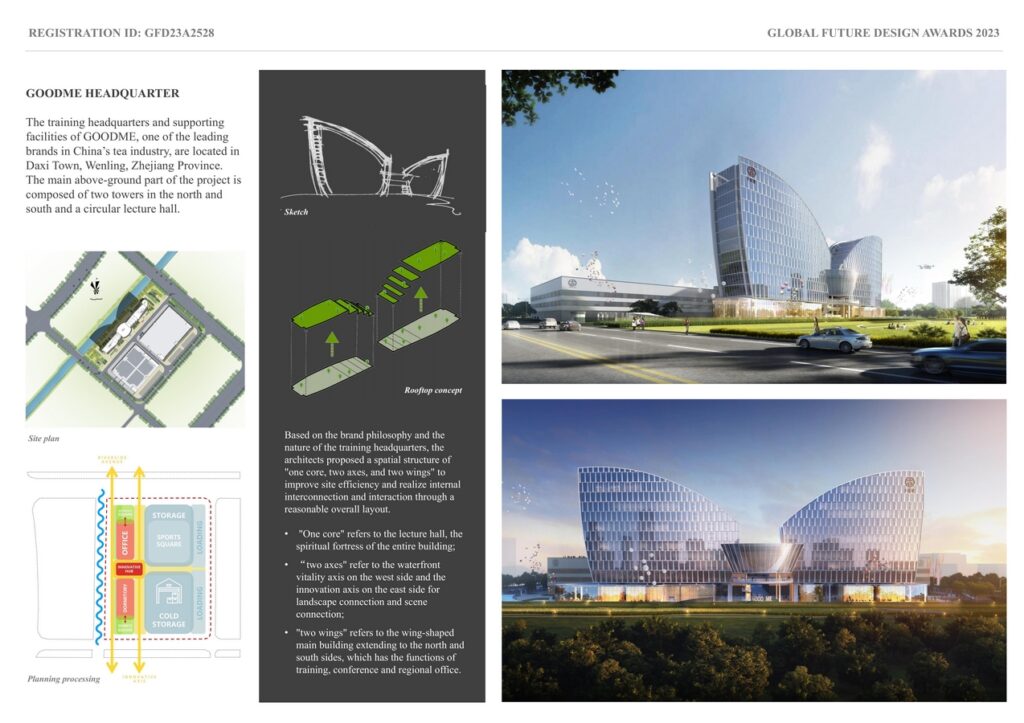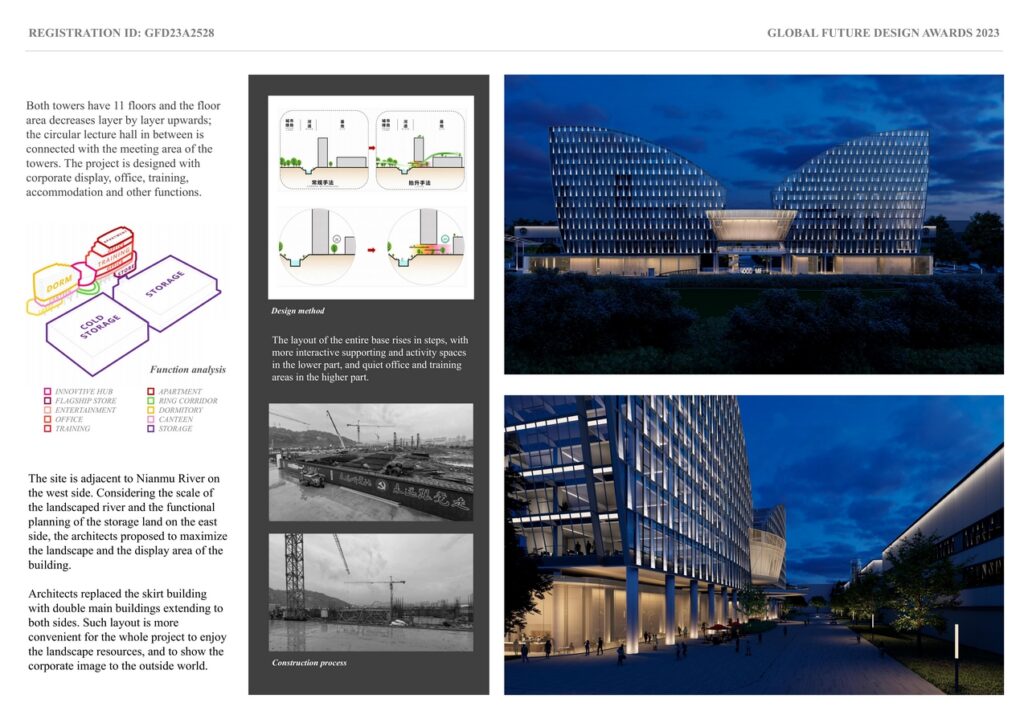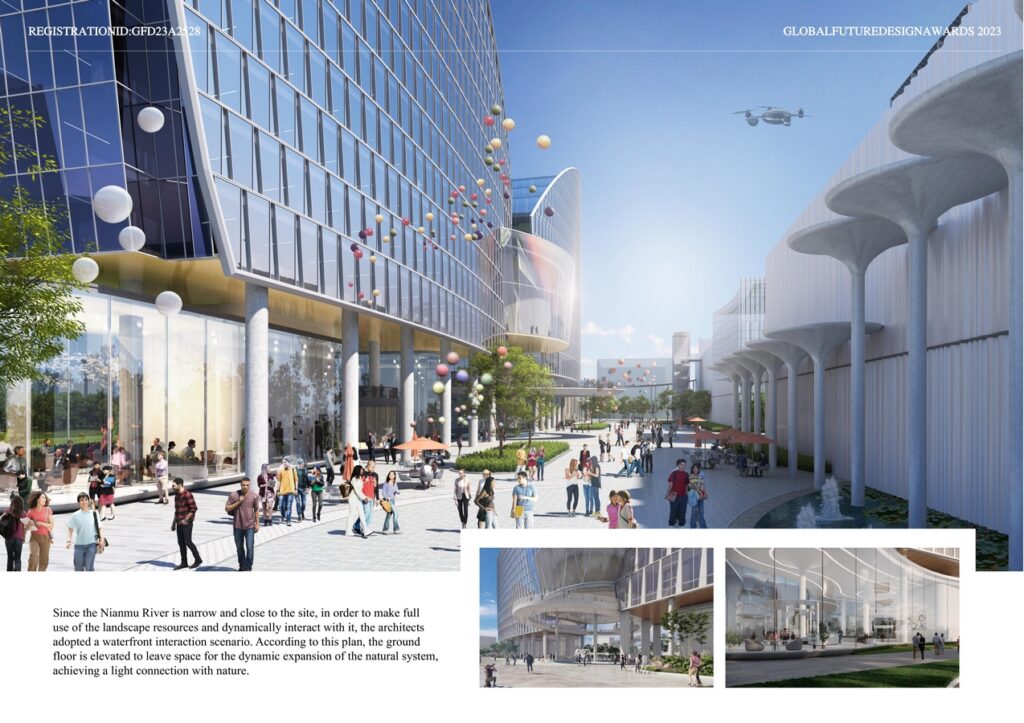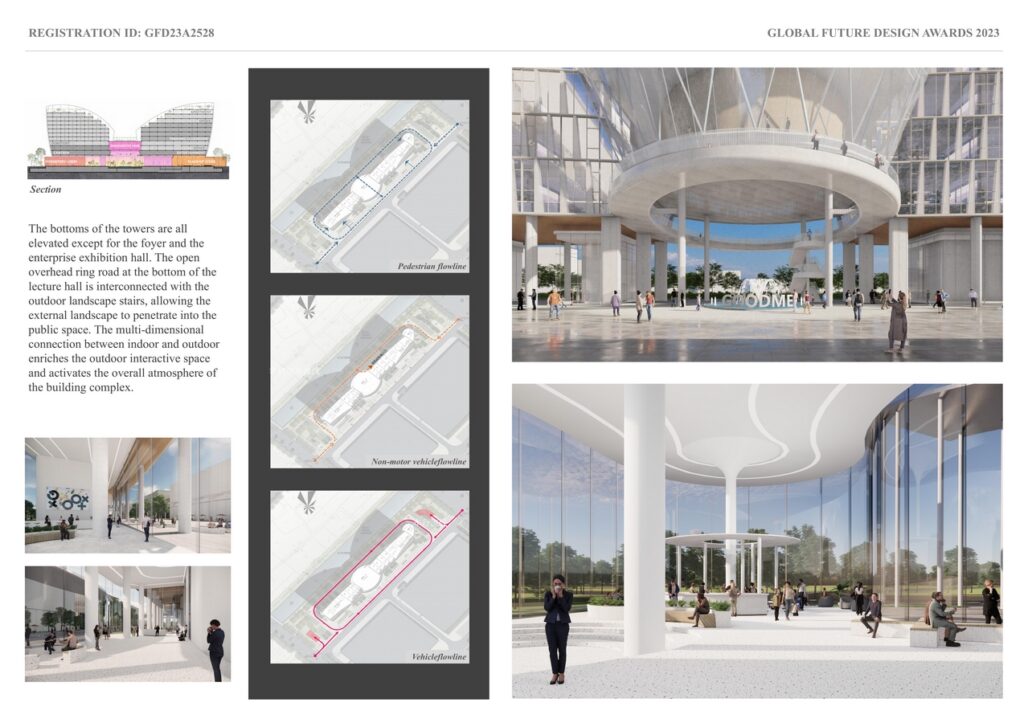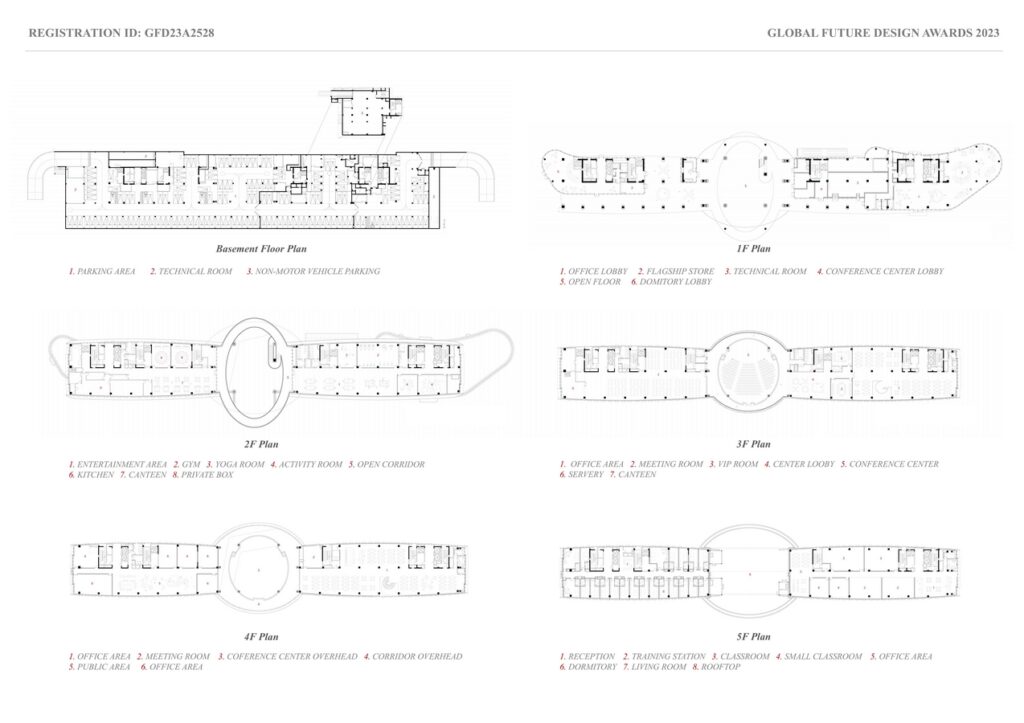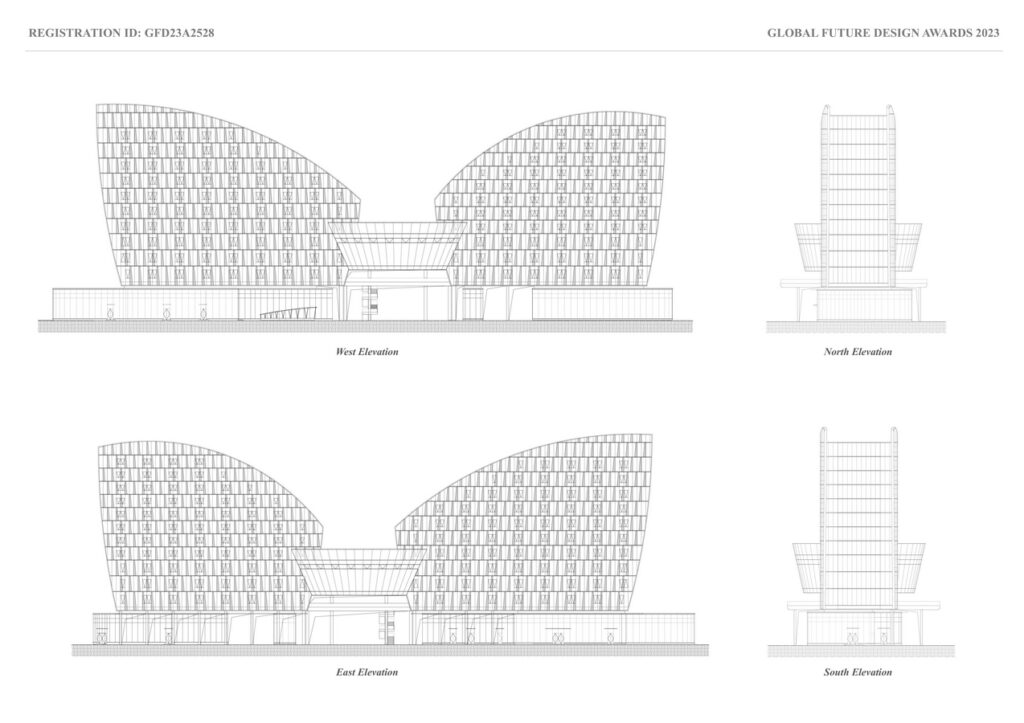The training headquarters and supporting facilities of GOODME, one of the leading brands in China’s tea industry, are located in Daxi Town, Wenling, Zhejiang Province. The main above-ground part of the project is composed of two towers in the north and south and a circular lecture hall. Both towers have 11 floors and the floor area decreases layer by layer upwards; the circular lecture hall in between is connected with the meeting area of the towers. The project is designed with corporate display, office, training, accommodation and other functions.
Global Future Design Awards 2024: Entries Open!
Take your work to the next level. Register Now…
Gold 🏆 Winner
Global Future Design Awards 2023
GOODME Headquarter Project
Corporate Architecture (Under Construction)
Firm
C J International, Canada
Architect/Designer
Carlos Ott, JUNE CHUANG, Zhu Wenjing
Design Team
Wang Xiaofan, Shi Zefeng, Zhang Mengdie, Zheng Yu, Huang Jiaqiang, Feng Dapeng, Jiang Yue, Huang Shuangshuang, Silvia Menendez, Alla Ching Shan Cheung, Christopher Wai Yiu Choy
Project Location
Wenling City
Country
China
Photographer/Copyright
©C J International, Canada
Social Media Handles
Facebook: Not Available
YouTube: Not Available
Instagram: Not Available
Twitter: Not Available
Website URL
N/A
Based on the brand philosophy and the nature of the training headquarters, the architects proposed a spatial structure of “one core, two axes, and two wings” to improve site efficiency and realize internal interconnection and interaction through a reasonable overall layout. “One core” refers to the lecture hall, the spiritual fortress of the entire building; “two axes” refer to the waterfront vitality axis on the west side and the innovation axis on the east side for landscape connection and scene connection; “two wings” refers to the wing-shaped main building extending to the north and south sides, which has the functions of training, conference and regional office. On the whole, the combination of space shaping, functional layout and design language makes the training headquarters a palace with order, sci-fi elements and a sense of belonging.
The site is adjacent to Nianmu River on the west side. Considering the scale of the landscaped river and the functional planning of the storage land on the east side, the architects proposed to maximize the landscape and the display area of the building. They replaced the skirt building with double main buildings extending to both sides. Such layout is more convenient for the whole project to enjoy the landscape resources, and to show the corporate image to the outside world. Since the Nianmu River is narrow and close to the site, in order to make full use of the landscape resources and dynamically interact with it, the architects adopted a waterfront interaction scenario. According to this plan, the ground floor is elevated to leave space for the dynamic expansion of the natural system, achieving a light connection with nature.
The layout of the entire base rises in steps, with more interactive supporting and activity spaces in the lower part, and quiet office and training areas in the higher part. This rising mode visually reduces the volume of the buildings, expands the field of vision, and increases the ventilation and light-transmitting space. The bottoms of the towers are all elevated except for the foyer and the enterprise exhibition hall. The open overhead ring road at the bottom of the lecture hall is interconnected with the outdoor landscape stairs, allowing the external landscape to penetrate into the public space. The multi-dimensional connection between indoor and outdoor enriches the outdoor interactive space and activates the overall atmosphere of the building complex.
The design of the overall facade is inspired by the logo of GOODME, with regular components forming a majestic, simple, exquisite and characteristic facade image. Considering the external sun-shading requirements of the building and the local climate of Daxi Town, the architects adopted perforated panels as sun-shading components, while avoiding large-scale components protruding outward. The main design is divided into upper and lower parts, among which the overhead layer is mainly transparent and light glass curtain wall system. A similar curtain wall system is used for the facade of the upper tower, supplemented by paint and aluminum panels, combining modernity and traditional aesthetics. The contrast of light and shadow, and the texture of exterior wall materials highlights the shape of the building; the addition of geometric elements highlights the minimalist and rational concept contained in the overall facade.


